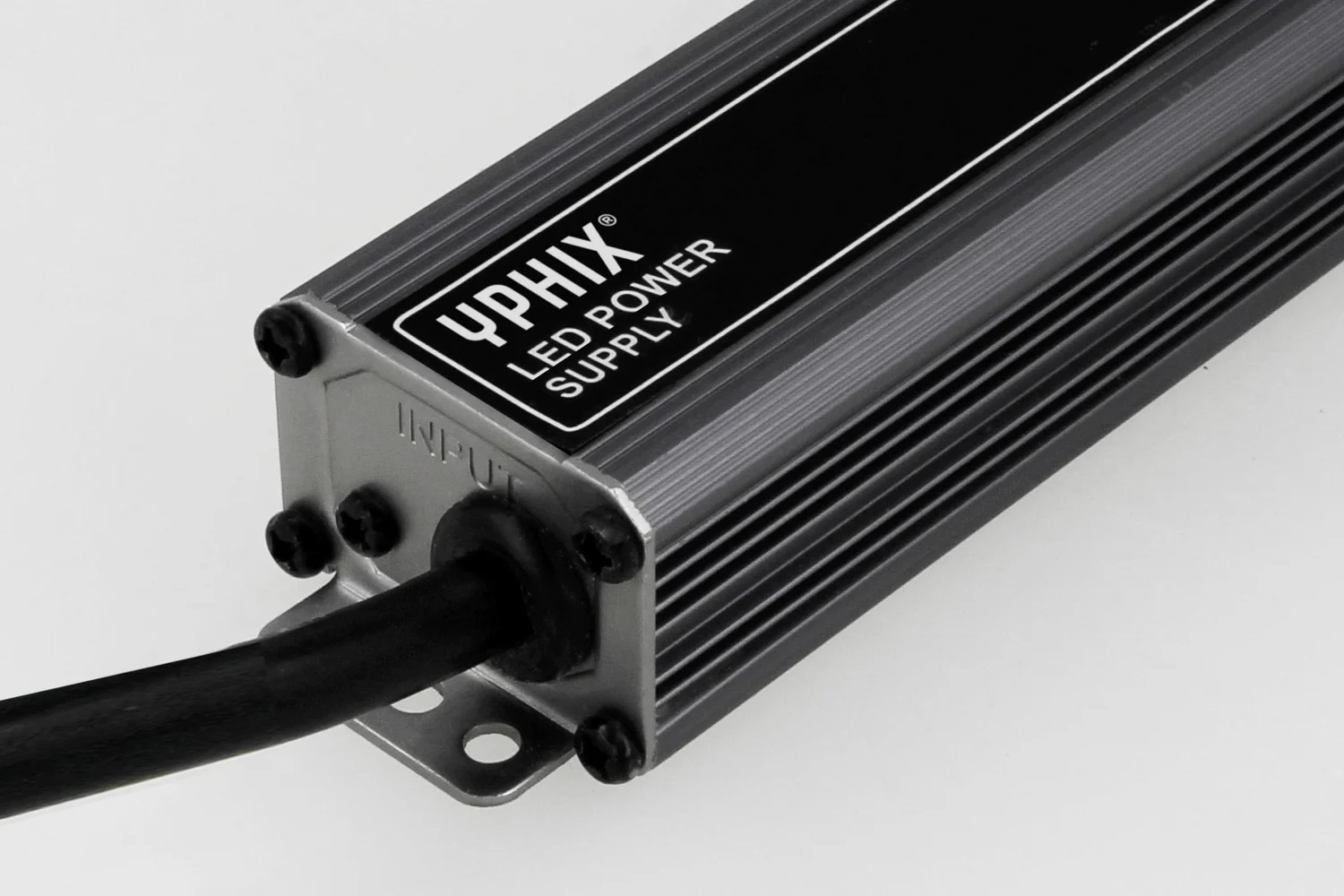Tech
India’s Sky Sentinel Takes Flight: Meet the FWD-200B, Our Homegrown Guardian Drone

Imagine the vast, rugged terrain along India’s borders. The sun glints off arid landscapes or dense forests. High above, silent and watchful, a powerful indigenous sentinel patrols the skies. This isn’t science fiction; it’s the reality brought by the FWD-200B – India’s very first indigenous military-grade bomber drone, marking a giant leap in our defence capabilities. Think about it: for decades, we relied on others for such critical technology. Now, we build our own guardian. Pretty incredible, right?
This isn’t just another drone. The FWD-200B, developed right here by Bangalore’s Flying Wedge Defence and Aerospace Technologies, is a testament to the ‘Make in India’ spirit hitting supersonic speed in the defence sector. It’s a game-changer, and here’s why.
What Makes the FWD-200B a Strategic Powerhouse?
Classified as a Medium-Altitude Long-Endurance (MALE) combat UAV, the FWD-200B is built for serious business. Let’s break down what this aerial workhorse brings to the table:
- Staying Power: It can loiter in the sky for a staggering 12 to 20 hours continuously. That’s an entire day of persistent surveillance or standby for precision action.
- Speed & Range: Clocking a max speed of 370 km/h, it can respond rapidly to emerging threats. While controlled from the ground within a 200 km radius, its endurance allows it to cover significant operational areas.
- Muscle & Might: Don’t let its MALE classification fool you. With a maximum take-off weight of 498 kg, it packs a punch, capable of carrying up to 100 kg of payload. That payload isn’t just cameras…
- Eyes and Fists: Equipped with advanced optical surveillance systems, it sees with incredible clarity. Crucially, it’s integrated with missile-like weapons systems designed for precision strikes. See a threat? It can engage it, accurately and decisively.
Simply put: The FWD-200B is designed to see deep, stay long, and hit hard when needed – all under Indian control.
The Beating Heart: “Make in India” Takes to the Skies
The significance of the FWD-200B goes far beyond its impressive specs. It embodies a crucial national mission:
- Breaking Dependence: For years, advanced military UAVs were largely imported. The FWD-200B shatters that dependency, putting critical defence technology firmly in Indian hands.
- Indigenous Innovation: Flying Wedge Defence isn’t just assembling parts; they’re pioneering deep R&D and manufacturing within India. This builds vital expertise and industrial capacity.
- Strategic Autonomy: Controlling the entire lifecycle – design, development, production, maintenance – means India isn’t vulnerable to supply chain disruptions or geopolitical pressures when it comes to this vital capability.
- Economic Catalyst: Programs like this fuel the defence manufacturing ecosystem, creating high-tech jobs and fostering innovation across related industries.
Think of it like this: Building the FWD-200B isn’t just about having a drone; it’s about planting a flag on the high-tech defence frontier and saying, “We can do this ourselves, and we will.”
Why This Drone is a Game-Changer for India’s Security
So, what does the FWD-200B actually mean for India’s defence posture?
- Enhanced Border Vigilance: Those 20-hour endurance flights are perfect for monitoring vast, often inaccessible border areas – from the Himalayas to the coastlines – providing real-time intelligence and deterrence.
- Counter-Terrorism & Precision Ops: The ability to conduct surveillance and deliver precision strikes with minimal risk to personnel is invaluable in counter-insurgency and counter-terrorism scenarios. Think surgical operations based on solid intel.
- Force Multiplier: It augments traditional air power, allowing manned aircraft to focus on more complex missions while UAVs like the FWD-200B handle persistent watch or targeted engagements.
- Cost-Effective Deterrence: Operating advanced drones is significantly cheaper than manned fighter jets for certain missions, allowing for more persistent presence without breaking the bank.
The Future is Indigenous: What the FWD-200B Signals
The successful development of the FWD-200B isn’t an endpoint; it’s a powerful launchpad:
- Tech Evolution: Expect rapid iterations – longer range, higher payloads, greater autonomy, and integration of AI for smarter operations. Flying Wedge and others will keep pushing boundaries.
- Expanding the Fleet: This paves the way for a diverse family of indigenous UAVs – larger bombers, stealthier models, naval variants – creating a layered, robust drone force.
- Global Player Potential: Demonstrating this capability opens doors. While primarily for our defence, it signals India’s arrival as a serious developer and potential exporter of advanced military UAV technology in the future.
In essence: The FWD-200B is the first, confident chapter in India’s story as a creator of world-class combat drones.
Soaring Ahead: What This Means for India
The FWD-200B is more than metal, wires, and software. It’s a symbol:
- A Symbol of Self-Reliance: Proof that India can conceive, design, and build cutting-edge military technology.
- A Symbol of Strategic Resolve: Demonstrating commitment to securing our borders and interests with indigenous solutions.
- A Symbol of Innovation: Showcasing the prowess of India’s private defence sector, like Flying Wedge Defence, stepping up to national challenges.
The Takeaway: 3 Reasons the FWD-200B Matters Today
- Unblinking Eye, Precise Fist: It provides persistent surveillance and the ability to conduct accurate strikes, enhancing security dramatically.
- Made in India, For India: It drastically reduces foreign dependence, boosting strategic autonomy and the domestic defence economy.
- The First of Many: It marks the beginning of India’s journey as a producer of sophisticated combat UAVs, promising even more advanced systems ahead.
The skies over India now have a powerful, homegrown guardian. The era of indigenous combat drones has truly begun with the FWD-200B. What do you think this means for the future of India’s defence capabilities?
You May Also Read: Advancements in Simulation Technology for Industry Training and Efficiency
FAQs
Who developed the FWD-200B? It was developed by Flying Wedge Defence and Aerospace Technologies, an Indian private defence company based in Bangalore.
What does MALE stand for? MALE stands for Medium-Altitude Long-Endurance. It means the drone operates at medium altitudes (typically 10,000-30,000 feet) and can stay airborne for very long periods (12-20 hours for the FWD-200B).
What weapons can the FWD-200B carry? While specific weapon types are often classified, it is confirmed to be integrated with missile-like precision-guided munitions suitable for its 100 kg payload capacity.
How does the FWD-200B support ‘Make in India’? It is designed, developed, and manufactured entirely within India, reducing foreign dependence, building domestic expertise, and strengthening the indigenous defence industrial base.
What is the primary role of the FWD-200B? Its primary roles are Intelligence, Surveillance, and Reconnaissance (ISR) and precision strike missions, significantly enhancing border security and counter-terrorism capabilities.
How does its range work? It has a ground-control range of 200 km, meaning the pilot controls it from a station within that distance. However, its 12-20 hour endurance allows it to cover large areas within that operational radius over time.
Is the FWD-200B in service with the Indian Armed Forces? While development and testing are confirmed, official induction details are typically disclosed by the armed forces or the Ministry of Defence when operational.
Tech
The Growing Importance of Reliable LED Power Supply Suppliers in the Global Lighting Industry

In recent years, LED lighting has revolutionized the way we illuminate our homes, offices, streets, and industrial facilities. With its high efficiency, long lifespan, and environmental benefits, LED technology has rapidly replaced traditional lighting sources such as incandescent and fluorescent lamps. However, one of the most critical yet often overlooked components in LED lighting systems is the LED power supply. As demand for LEDs continues to grow worldwide, the role of LED power supply suppliers has become increasingly important for ensuring quality, reliability, and innovation in the lighting industry.
An LED power supply, also known as an LED driver, is responsible for converting the incoming electrical current into a stable and suitable form that powers the LEDs. Since LEDs require specific current and voltage conditions to operate efficiently, the power supply plays a vital role in determining the performance, safety, and lifespan of the lighting system. A well-designed LED power supply ensures consistent brightness, prevents flickering, and protects against power surges or overheating. Therefore, choosing the right LED power supply and working with reliable suppliers are essential steps for any lighting manufacturer or project integrator.
The Role of LED Power Supply Suppliers in Quality Assurance
High-quality LED lighting products depend heavily on the capabilities and expertise of their suppliers. Leading LED power supply suppliers not only provide stable and energy-efficient products but also ensure compliance with international standards such as CE, UL, RoHS, and FCC. These certifications demonstrate that their power supplies meet safety, environmental, and performance requirements. Moreover, reputable suppliers typically have robust quality control systems and testing facilities to ensure that each unit performs consistently under different environmental conditions.
In today’s competitive market, LED power supply suppliers also play an essential role in helping manufacturers achieve cost efficiency. Through innovation and economies of scale, they can reduce the cost per unit while maintaining product quality. This enables lighting brands to offer affordable yet high-performance solutions to consumers and businesses. Furthermore, suppliers often work closely with their clients to customize solutions for specific applications, such as architectural lighting, industrial lighting, horticultural lighting, or smart city infrastructure.
Innovation and Technology Development
Innovation is a key differentiator among LED power supply suppliers. With rapid advancements in smart technology, the demand for intelligent power supplies has surged. Modern LED drivers now often include features such as dimming capability, remote monitoring, wireless control, and integration with Internet of Things (IoT) systems. These advanced features allow users to control brightness, color temperature, and energy consumption through mobile apps or centralized control platforms, offering both convenience and energy efficiency.
Leading suppliers are investing heavily in research and development to create more compact, efficient, and eco-friendly power supply solutions. The focus is shifting toward achieving higher energy conversion rates, improved thermal management, and longer lifespans. In addition, as governments and organizations emphasize sustainable development, suppliers are developing products that support renewable energy systems, such as solar-powered LED lighting.
Global Supply Chain and Market Trends
The global LED power supply market is highly competitive and dynamic. Suppliers from countries such as China, Taiwan, South Korea, Germany, and the United States dominate the industry, each contributing unique strengths. Chinese LED power supply suppliers, for instance, have gained a significant share of the global market due to their cost-effective manufacturing capabilities and rapid product innovation. Many international lighting brands source their drivers from China because of the country’s well-established electronics supply chain.
However, as global demand continues to rise, challenges such as raw material shortages, fluctuating energy costs, and international trade policies can impact supply chain stability. To address these issues, many suppliers are adopting more resilient business models, such as establishing regional production centers, diversifying their supplier base, and using advanced logistics technologies. These strategies help ensure timely delivery, consistent quality, and cost control for their global customers.
Selecting the Right LED Power Supply Supplier
When selecting a supplier, lighting manufacturers and distributors must consider several key factors. First, product reliability and certification are essential to ensure compliance with safety and performance standards. Second, technical support and after-sales service play a significant role, especially for large-scale lighting projects. A responsive supplier can help troubleshoot issues, provide design recommendations, and offer firmware updates for smart drivers. Third, customization capabilities are increasingly important, as different lighting applications require unique voltage, current, and control specifications.
Furthermore, sustainability is becoming a core selection criterion. Many companies now prioritize suppliers who adhere to green manufacturing practices, use recyclable materials, and minimize waste in production. This alignment with environmental values not only enhances brand reputation but also supports global sustainability goals.
The Future of LED Power Supply Suppliers
Looking ahead, the role of LED power supply suppliers will continue to expand as lighting technology evolves. The integration of artificial intelligence (AI), IoT, and advanced energy management systems will require more sophisticated power solutions. Suppliers who can adapt to these trends and offer smart, efficient, and eco-friendly products will gain a competitive advantage in the global market.
Additionally, as renewable energy and electric mobility continue to grow, LED power supply technologies may find new applications beyond lighting — such as in charging systems, energy storage, and smart grid solutions. This diversification offers exciting opportunities for both established and emerging suppliers in the industry.
Conclusion
In conclusion, LED power supply suppliers are at the heart of the rapidly evolving LED lighting ecosystem. Their products directly influence the efficiency, safety, and intelligence of lighting systems across residential, commercial, and industrial sectors. By providing reliable, innovative, and sustainable solutions, these suppliers not only support the growth of the LED industry but also contribute to a more energy-efficient and environmentally friendly world. As the global market continues to expand, collaboration between manufacturers, designers, and LED power supply suppliers will remain essential for driving the next generation of lighting innovation.
Tech
6 Myths About Solar Energy Debunked

In recent years, the popularity of solar energy has skyrocketed as more homeowners recognize its potential benefits. Despite this increase in interest, many people are still held back by incorrect beliefs about solar energy.
Let’s explore six common myths surrounding this renewable energy source and the facts that debunk them in this solar installation guide.
1. Solar Energy is Too Expensive
One of the most widespread misconceptions about solar energy is that it is prohibitively expensive. While the initial investment for a solar power system can be significant, various financing options are available.
Many states also offer tax credits, rebates, and incentives that can greatly reduce costs. In fact, the long-term solar energy savings makes it one of the most energy-efficient solutions for homeowners!
2. Solar Panels Don’t Work in Cloudy Weather
Another prevalent myth is that solar panels aren’t effective unless it’s sunny all the time. While it’s true that solar panels are most efficient during direct sunlight, they can still generate energy on cloudy or rainy days.
In fact, most modern solar panels are designed to capture even diffused sunlight effectively.
3. Solar Energy Requires Too Much Maintenance
Many people think that once they install a solar power system, maintenance will be a headache. On the contrary, they are relatively low-maintenance.
Regular cleaning and occasional inspections are usually all that’s needed. Most manufacturers also provide warranties to cover any potential issues.
4. Installing Solar Panels Will Ruin Your Roof
Some homeowners fear that installing solar panels will damage their roofs. In reality, reputable solar installers know how to effectively mount panels without compromising the integrity of your roof.
Proper installation can actually improve your roof’s lifespan by protecting it from elements like UV rays and rain.
5. Solar Energy is Not Available Everywhere
While it’s true that solar energy is more effective in certain geographic locations, it is available almost everywhere. Cities and towns across the country, even in less sunny regions, are utilizing solar energy.
Innovative technology ensures that solar panels can efficiently generate power regardless of the climate. When in doubt, consult a renewable energy expert for region-specific advice.
6. Solar Panel is the Only Available Solar Energy Solution
Many people assume that solar panels are the only effective way to lower energy bills, but that isn’t true. Daylight solutions like Solatube can capture natural sunlight and channel it into interior spaces, reducing the need for artificial lighting during the day.
Visit https://thesolarguys.com/ to find out how to get started!
Don’t Let Myths Hinder Your Solar Journey!
Understanding the facts behind solar energy can empower homeowners to make informed decisions. By debunking these five myths, we can foster a clearer understanding of how solar energy can benefit us all. If you’re considering a shift to solar, take the leap and explore the options available to you!
As you plan your transition to renewable energy, consider working with experienced professionals who can guide you through the process. Don’t let misconceptions hold you back from harnessing the power of the sun.
Looking for more home improvement advice? Dive into our other blog posts for expert tips and inspiration!
READ ALSO: How to Maximise Energy with Solar Panel Cleaning Services
Tech
waxillgro279: Understanding Your Digital Identity

Did you know that the average person has over 90 online accounts? Each one requires a username, and many of those are autogenerated strings of characters you’d never choose yourself. That’s where an identifier like waxillgro279 comes in. It might look like random keyboard smashing, but it represents a much bigger story about your life online.
In this guide, we’ll pull back the curtain on these computer-generated usernames. We’ll explore what they are, why they matter for your security, and how you can manage them effectively. Let’s dive in.
What Exactly Is waxillgro279?
Before you assign any meaning to it, it’s crucial to understand that waxillgro279 is a prime example of a context-dependent identifier. In plain English, it’s a unique name created by a system, not a person.
Think of it like a digital license plate. It’s not meant to be poetic or memorable; its main job is to be unique. You might encounter a handle like this in several places:
- A new user account on a website or app.
- A temporary project ID in collaborative software.
- A transaction reference number for an online order.
- An auto-saved file name from a document editor.
The key takeaway? waxillgro279 itself has no inherent meaning. Its purpose is entirely defined by the system that generated it. You must check the source—the email, webpage, or app where you found it—to understand its true function.
A Step-by-Step Guide to Managing Autogenerated Identifiers
Finding a cryptic username in your inbox can be confusing. Here’s a simple, friendly guide to figuring out what to do with it.
- Don’t Panic or Assume. Your first reaction might be, “What is this? Is this a virus?” Remember, these identifiers are usually benign. Take a deep breath and proceed calmly.
- Verify the Source Immediately. This is the most critical step. Where did you see waxillgro279?
- Email: Check the sender’s address carefully. Is it from a company you know and trust, like Amazon, your bank, or a project management tool like Asana? Look for signs of phishing—poor grammar, urgent threats, or mismatched links.
- App or Website: Are you logged into a service? Check your account settings or notification center within the app itself. Never click on links from an unverified source.
- Understand Its Context. Once you’ve confirmed the source is legitimate, figure out the identifier’s role.
- Is it your new username for logging in?
- Is it a reference number for a customer support ticket?
- Is it a unique key for accessing a shared document?
- Decide on an Action.
- Save It: If it’s a important login ID or reference number, save it in a secure password manager or a trusted note-taking app.
- Ignore It: If it’s a temporary, one-time code, you can usually disregard it once you’ve used it.
- Change It: Many services allow you to change an autogenerated username to something more memorable in your account settings.
Why These Random Identifiers Actually Protect You
You might wonder why companies don’t just let you pick all your usernames. It seems like it would be easier! The truth is, autogenerated IDs like waxillgro279 play a huge role in modern online security.
Using a unique, random string makes it incredibly difficult for hackers to guess your login credentials through so-called “brute force” attacks. If every username was a common first name, accounts would be far less secure.
The chart below shows the relative strength of different types of usernames against automated hacking attempts. As you can see, a random alphanumeric string is significantly more robust than a common name or word.
Common Mistakes to Avoid
When dealing with these computer-assigned handles, a few missteps can cause headaches or even security risks.
- Treating It as Spam Immediately. Deleting that “welcome” email with your new user ID might mean you lose your only way to access a service you signed up for.
- Using It Across Multiple Sites. Never use the same password for waxillgro279 that you use for any other account. Its randomness is a strength, but password reuse is a critical weakness.
- Assuming All Autogenerated Messages are Safe. Scammers are clever. They know this trend and might send fake emails with similar-looking IDs. Always, always verify the source first.
Your Next Steps: Taking Control of Your Digital Self
Your online identity is a collection of these tiny data points. Managing them well is key to a secure and streamlined digital life. Here are your three key takeaways:
- Context is King. A string like waxillgro279 is meaningless without knowing where it came from. Verify the source before you do anything.
- Embrace the Randomness. These complex identifiers are a layer of security, not an inconvenience. They help keep your accounts safe from automated attacks.
- Use a Password Manager. This is the single best tool for storing these hard-to-remember usernames and generating strong, unique passwords for each of them.
What’s one change you’ll make today to better manage your digital footprints?
You May Also Read: Ovppyo: Emerging AI-Driven Automation Concept Explored
FAQs
I found “waxillgro279” in an email. Is it a virus?
Not necessarily. It is almost certainly an autogenerated username or ID from a legitimate service you signed up for. Carefully check the sender’s email address to verify it’s from a company you trust.
Can I change my autogenerated username?
In many cases, yes. Once you log into the service using the provided credentials, check your account settings or profile page. There is often an option to change your username to something more memorable.
Why do companies use such hard-to-remember names?
Primarily for uniqueness and security. Automated systems guarantee that no two users have the same ID, preventing conflicts. The randomness also makes it harder for bots to guess usernames during login attempts.
Should I be worried about privacy with these identifiers?
These IDs are typically designed to be anonymous and don’t contain personal information. However, always review the privacy policy of the service generating it to understand what data they associate with your account.
What’s the best way to keep track of them?
A dedicated password manager is highly recommended. It securely stores all your usernames, passwords, and notes, so you only need to remember one master password.
Is “waxillgro279” a product I can buy?
No. Based on its structure and common usage online, it is an identifier, not a commercial product. Be highly skeptical of any site trying to sell you something using this term.
What if I lose this username?
Use the “Forgot Username” or “Help” link on the service’s login page. You will typically need to provide the email address associated with the account, and they will send you a reminder.
-

 Education10 months ago
Education10 months agoMastering Excel: Your Comprehensive Guide To Spreadsheets And Data Analysis
-

 Tech1 year ago
Tech1 year agoHow To Choose The Best Forex Trading Broker?
-

 Business1 year ago
Business1 year agoExploring the Rental Market: Properties for Rent in Malta
-

 Blog11 months ago
Blog11 months agoArab MMA Fighters Shine Bright: Meet the Champions of PFL MENA
-

 Travel1 year ago
Travel1 year agoExperience the Best Desert Safari Dubai Offers!
-

 How-To Guides1 year ago
How-To Guides1 year agoComprehensive Guide to Cockwarming: Enhancing Intimacy and Connection
-

 Home Improvement2 years ago
Home Improvement2 years agoEco-Friendly Round Rug Options for Sustainable Living in NZ
-

 Apps and Games2 years ago
Apps and Games2 years agoDiscover Tickzoo: The Ultimate Platform for Video Content Lovers and Creators
